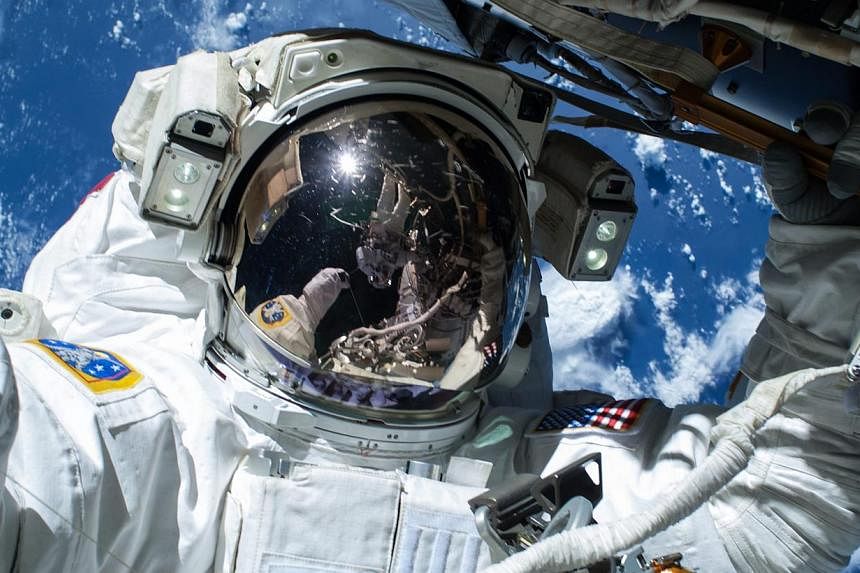MIAMI (AFP) - Two US astronauts on Sunday stepped out on the third spacewalk to prepare the International Space Station for the arrival of more commercial spacecraft in the coming years.
Space station commander Barry Wilmore and flight engineer Terry Virts began their six hour, 45 minute spacewalk just before 8 pm Singapore time.
Tethered to the outside of the orbiting outpost, they made quick work of their first task, each installing a boom with two antennas for a communications system so that future crews launching from Florida on US commercial spacecraft will be able to park at the space station, NASA said.
Another main part of their job is to route 122 metres of cable, securing them with copper wire ties as they manoeuvre across handrails on the space station.
The spacewalk is the third in eight days for NASA, and is the 187th in the history of the space station.
During the previous two spacewalks, Wilmore and Virts installed more cable and lubricated the latching portions of the space station robotic arm, which NASA said had grown "arthritic" after more than a decade in space.
Sunday's spacewalk is one of many planned for the coming year to prepare the space station for a new era in human spaceflight, when more commercial vehicles will be arriving at the research outpost carrying astronauts.
Boeing and SpaceX are working on new spaceships that will carry astronauts to space, restoring US access to low-Earth orbit following the retirement of the US space shuttle program in 2011.
Boeing's crew vehicle, called CST-100, is planning its first flight with a pilot and astronaut in late 2017, and SpaceX hopes to follow soon after.
Until then, the world's astronauts must pay US$70 million (S$94.5 million) per seat for transport aboard Russia's Soyuz capsules.
The outing went ahead despite an apparent problem with Virts' spacesuit that allowed water to build up inside his helmet after he finished his spacewalk on Wednesday.
NASA said the suit was known to have issues with "'sublimator water carryover,' a small amount of residual water in the sublimator cooling component that can condense once the environment around the suit is repressurised following its exposure to vacuum during a spacewalk, resulting in a tiny amount of water pushing into the helmet." US space agency experts met Friday at mission control in Houston. They decided the crew was not in any danger and gave the go-ahead for Sunday's spacewalk.
In the first hours of Sunday's outing, Wilmore and Virts said they were experiencing no problems so far.
"Both astronauts have reported dry conditions inside their spacesuits during periodic checks with ground controllers," NASA said on its space station blog.

